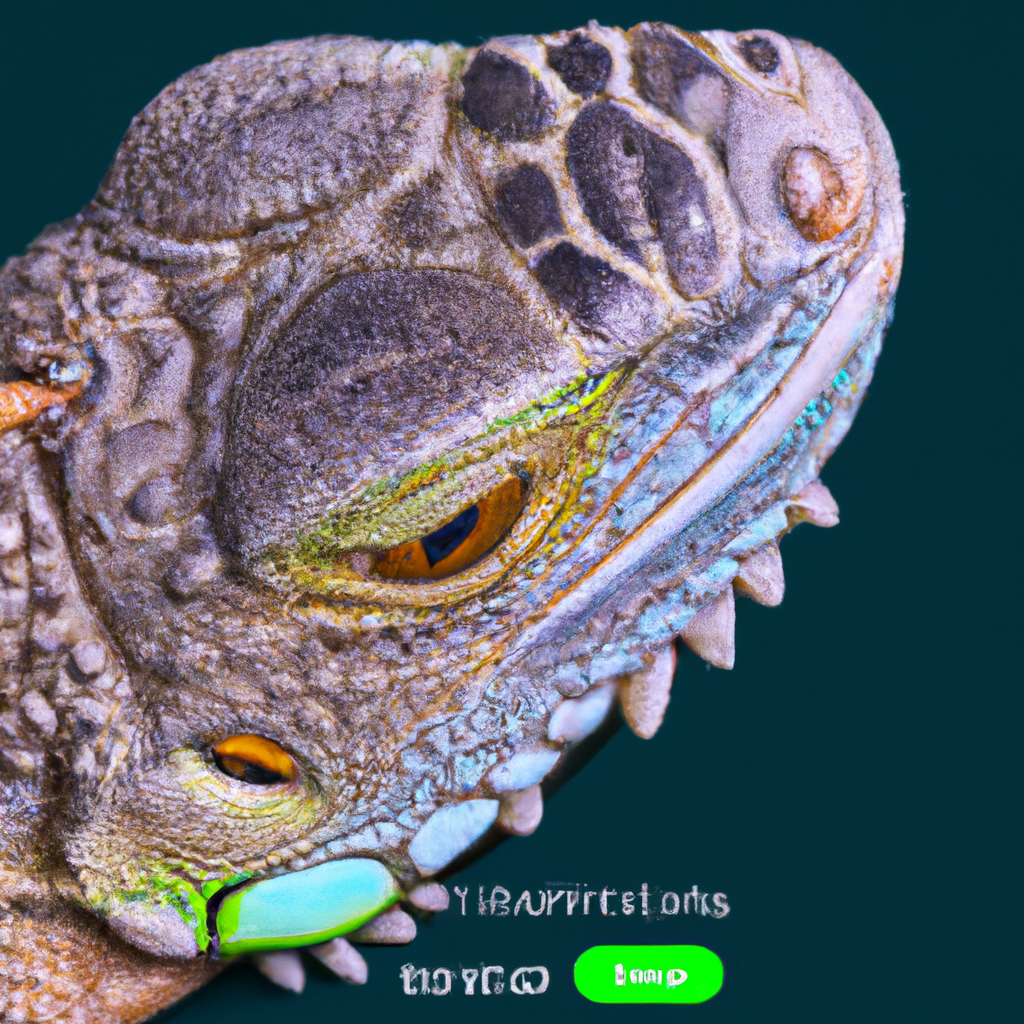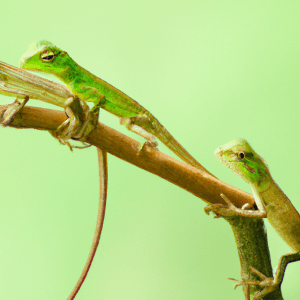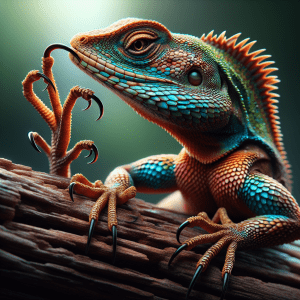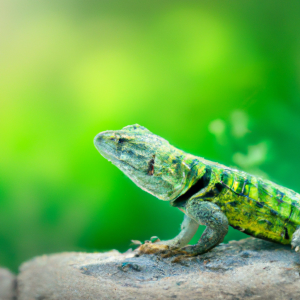Importance of Daily Maintenance for Pet Lizards
Have you ever wondered about the daily maintenance needs of pet lizards? It’s truly fascinating how these unique creatures require specific care to thrive in a home environment. I remember when I first decided to bring a pet lizard into my life; I was captivated by their mysterious charm and wanted to ensure I provided the best care possible.
Setting up a proper habitat for your pet lizard is crucial. From selecting the right enclosure size to creating a suitable temperature gradient and providing appropriate lighting and substrate, there are various factors to consider. Each species of lizard has its own habitat requirements, so it’s essential to research and tailor the setup to meet your pet’s specific needs.
One interesting fact about pet lizards is that they are ectothermic, meaning they rely on external sources of heat to regulate their body temperature. This trait influences their habitat design, as you’ll need to provide heat sources such as heat lamps or heat mats to create warm basking spots for your lizard to thermoregulate effectively.
Feeding guidelines and nutritional needs play a significant role in the daily maintenance of pet lizards. Understanding what and how to feed your lizard is essential for their health and well-being. Different species have varying dietary requirements, so it’s crucial to offer a balanced diet that includes a mix of live insects, vegetables, and supplements.
Daily cleaning and maintenance tasks are also essential aspects of caring for pet lizards. Regularly cleaning the enclosure, removing waste, and providing fresh water are necessary to ensure a clean and hygienic environment for your pet. Monitoring humidity levels and checking for any signs of illness or stress are additional tasks that should be part of your daily routine.
By paying attention to these key aspects of daily maintenance, you can create a happy and healthy life for your pet lizard. Remember, each lizard is unique, so observing your pet’s behavior and adjusting your care routine accordingly is crucial for their well-being.
Setting Up a Proper Habitat for Your Pet Lizard
Setting up a proper habitat for your pet lizard is crucial for their well-being. When I first brought home my bearded dragon, I was amazed at how much effort went into creating the perfect environment for him. Did you know that different species of lizards have specific habitat requirements based on their natural habitats? For instance, desert-dwelling lizards like the leopard gecko need a warm and dry environment with hiding spots, while tropical lizards like anoles thrive in humid conditions with plenty of foliage.
Creating a habitat that mimics your pet lizard’s natural environment is essential. From choosing the right size and type of enclosure to providing the correct substrate and lighting, every detail matters. I remember spending hours researching the ideal temperature and humidity levels for my lizard’s terrarium to ensure he was comfortable and healthy.
One important tip I learned along the way is to include plenty of hiding spots and climbing structures in the habitat. Lizards are naturally curious and active animals, so offering them a variety of spaces to explore and bask in will help keep them stimulated and happy. I even added some live plants to my lizard’s enclosure to create a more natural and enriching environment for him.
Another key aspect of setting up a proper habitat for your pet lizard is ensuring proper ventilation and cleanliness. Regularly cleaning the enclosure, removing waste, and maintaining a hygienic environment are essential for your lizard’s health. It’s like creating a little oasis for your scaly friend to thrive in!
By taking the time to set up a suitable habitat for your pet lizard, you’re not just creating a living space – you’re creating a home where your reptile companion can flourish. So, whether you have a gecko, iguana, or dragon, remember that a well-designed habitat is the foundation for a happy and healthy pet lizard.
Feeding Guidelines and Nutritional Needs
Feeding Guidelines and Nutritional Needs for pet lizards are crucial aspects of their daily maintenance. Picture this – imagine you’re preparing a delicious meal for yourself, ensuring it’s nutritious and balanced. Well, the same level of care and attention should be given when feeding your pet lizard.
Lizards have specific dietary requirements based on their species, size, and age. It’s essential to offer a varied diet that includes live insects, such as crickets, mealworms, and dubia roaches, as well as fresh fruits and vegetables. Providing a balanced mix of protein, vitamins, and minerals is key to keeping your pet lizard healthy and thriving.
Now, here’s an interesting fact: Did you know that some lizards are omnivores, while others are strict carnivores or herbivores? Understanding your lizard’s dietary preferences is crucial for meeting their nutritional needs. For example, bearded dragons enjoy a diet of leafy greens, vegetables, and occasional insects, while leopard geckos primarily consume insects like crickets and mealworms.
When it comes to feeding your pet lizard, it’s essential to consider portion sizes and feeding frequency. Overfeeding can lead to obesity and health issues, while underfeeding can result in nutrient deficiencies. Monitoring your lizard’s body condition and adjusting their diet accordingly is a practical tip to ensure they receive the right amount of food.
So, here’s a thought-provoking question for you: Have you ever considered the impact of your pet lizard’s diet on their overall health and well-being? By providing a nutritious and well-balanced diet, you’re not just feeding your pet lizard – you’re nurturing their vitality and longevity.
In conclusion, understanding the feeding guidelines and nutritional needs of pet lizards is essential for their daily maintenance. By offering a varied and nutritious diet tailored to your lizard’s specific requirements, you’re taking a significant step towards ensuring their health and happiness.
Daily Cleaning and Maintenance Tasks
Have you ever wondered about the daily cleaning and maintenance tasks involved in caring for pet lizards? It may not be the most glamorous part of being a reptile owner, but it’s crucial for your scaly friend’s health and happiness.
Cleaning your pet lizard’s habitat is not just about making it look tidy; it’s about creating a safe and healthy environment for your reptile to thrive. Regular cleaning helps prevent the buildup of bacteria and parasites that could harm your lizard. Plus, a clean habitat reduces stress and promotes overall well-being.
When it comes to daily maintenance, spot cleaning is your best friend. Remove any uneaten food, feces, shed skin, or other debris from your lizard’s enclosure every day. This will help prevent odors and keep the habitat clean and hygienic. Remember to replace substrate regularly to maintain cleanliness.
Incorporating a cleaning schedule into your daily routine can make the process less daunting. For example, you can designate specific days for tasks like deep cleaning the enclosure, sanitizing water and food dishes, and checking temperature and humidity levels. Consistency is key to ensuring your pet lizard’s habitat remains in top condition.
Proper maintenance also involves monitoring your lizard’s health and behavior. Keep an eye out for any signs of illness or distress, such as changes in appetite, lethargy, or unusual skin conditions. Regular health checks can help you detect potential issues early and seek veterinary care if needed.
Remember, a clean and well-maintained habitat is essential for the overall well-being of your pet lizard. By staying on top of daily cleaning and maintenance tasks, you’re not only providing a comfortable living space for your reptile but also fostering a strong bond with your scaly companion.
Handling and Interaction Tips for Pet Lizards
Handling and interacting with pet lizards can be a fascinating experience. These unique creatures have their own personalities and behaviors that make them intriguing companions. When it comes to handling your pet lizard, it’s essential to approach them with care and respect.
One practical tip to keep in mind is to always handle your lizard gently and confidently. Remember, lizards are delicate creatures with sensitive skin, so it’s crucial to support their body properly when picking them up. Avoid grabbing them by the tail, as this can cause stress and potential injury. Instead, gently scoop them up from underneath, supporting their body with both hands.
Another important aspect of handling pet lizards is understanding their body language. Just like any other animal, lizards communicate through their actions and behaviors. By observing your lizard’s body language, you can gauge their comfort level and respond accordingly. For example, if your lizard appears agitated or stressed, it’s best to give them space and avoid handling them until they have calmed down.
Additionally, it’s essential to wash your hands before and after handling your pet lizard to prevent the spread of any potential bacteria. This simple step helps maintain the health and well-being of both you and your reptile companion.
Remember, building a bond with your pet lizard takes time and patience. By approaching handling with a gentle touch and respecting your lizard’s boundaries, you can establish trust and create a positive interaction experience for both of you. So, next time you interact with your pet lizard, keep these tips in mind to ensure a harmonious relationship and enjoyable companionship.
Health and Wellness Checks for Your Reptile
Have you ever wondered how to ensure your pet lizard is in optimal health? Let’s dive into the essential topic of health and wellness checks for your reptilian friend.
When it comes to our scaly companions, regular health check-ups are crucial. Just like us, lizards can also face health issues that may go unnoticed without proper observation. By incorporating routine health assessments into your lizard care regimen, you can catch any potential problems early on.
One practical tip for conducting health checks is to observe your lizard’s behavior closely. Monitor their eating habits, activity levels, and overall demeanor. Any sudden changes in behavior could indicate an underlying health issue. Additionally, keep an eye on their physical appearance, such as skin condition, eye clarity, and body weight.
To make the health check process more engaging, you can turn it into a bonding activity with your pet lizard. Create a comfortable and stress-free environment for them during the examination. By establishing trust and rapport with your lizard, they will be more cooperative during the health checks.
Remember, prevention is key when it comes to maintaining your pet lizard’s well-being. Regular health assessments can help you detect any health concerns early, allowing for prompt intervention and treatment if needed. Your vigilant monitoring and care will contribute to a happy and healthy life for your beloved pet reptile.
So, why not schedule a health check-up session with your pet lizard today? It’s a proactive step towards ensuring their long-term health and happiness. By investing time and effort into their well-being, you’re not just a pet owner – you’re a dedicated lizard caretaker, committed to providing the best possible care for your scaly companion.
Common Mistakes to Avoid in Lizard Care
Have you ever wondered about the common mistakes people make when caring for pet lizards? It’s quite fascinating to see how even the most well-intentioned lizard owners can slip up from time to time. One key aspect to consider is the temperature and humidity levels in your lizard’s habitat. It’s essential to provide the right environment for your scaly friend, as fluctuations in temperature or humidity can lead to stress or even health issues for your lizard.
I remember one time when a friend of mine overlooked the importance of maintaining consistent temperature levels for their pet lizard. They assumed that room temperature would suffice, but unfortunately, their lizard started exhibiting signs of discomfort and sluggishness. It turned out that the fluctuating temperatures in the room were causing stress to the lizard, impacting its overall well-being. It was a valuable lesson for my friend, and they quickly adjusted the habitat conditions to create a more stable environment for their pet.
When it comes to caring for pet lizards, the devil is in the details. Another common mistake is related to feeding practices. Some lizard owners may not be aware of the specific dietary needs of their pets and end up offering inappropriate food items. This can result in nutritional deficiencies or digestive issues for the lizards. To avoid such pitfalls, it’s crucial to research the dietary requirements of your specific lizard species and provide a balanced and nutritious diet accordingly.
So, what are some other common mistakes you think people might make when caring for pet lizards? It’s always interesting to learn from each other’s experiences and insights. By being mindful of these common pitfalls and taking proactive steps to address them, you can ensure that your pet lizard lives a happy and healthy life.
Ensuring a Happy and Healthy Life for Your Pet Lizard
Have you ever wondered about the common mistakes people make when caring for pet lizards? It’s a topic that’s both enlightening and, at times, humorous. Let me share some insights with you.
When it comes to caring for these unique reptiles, there are a few pitfalls that many pet owners unknowingly fall into. One common mistake is neglecting to provide the proper temperature and humidity levels in their lizard’s habitat. You see, lizards are cold-blooded creatures, so regulating their environment is crucial for their well-being. It’s like trying to live in a house with no heating or air conditioning – not exactly comfortable, right?
Another misstep that some lizard owners make is improper handling techniques. Imagine trying to pick up a skittish lizard with lightning-fast reflexes – it can be quite the challenge! It’s essential to learn the proper way to handle your pet lizard to avoid unnecessary stress or potential harm to both you and your scaly friend.
Now, let me share a personal anecdote with you. I once knew someone who mistakenly believed that all lizards could eat the same diet. They thought that feeding their leopard gecko the same food as their bearded dragon would be just fine. Well, let’s just say that their gecko wasn’t too pleased with the menu switch! It’s essential to understand the specific dietary needs of each lizard species to ensure they receive the proper nutrition.
Avoiding these common mistakes in lizard care can lead to a happier and healthier life for your scaly companion. By taking the time to learn about their unique needs and behaviors, you can build a strong bond with your pet lizard and create a thriving environment for them to flourish.




